Bi-te Size Bits are short(ish) explainers on film theory or history, written in a (hopefully) fun and accessible way so that you can take the film bro in your life down a peg.
Long ago (2014) in a magical land (Tumblr), some prophetic wizards (chronically online bisexuals) identified a powerful illumination magic (neon lights) in a sacred text (an episode of Sherlock). To this day the exact nature of this power, and even its very existence, is doubted, making it all the more elusive and captivating. This power, of course, is bisexual lighting.
What is Bisexual Lighting?
Bisexual lighting is the use of blue, pink, and purple lights (the colours of the bisexual pride flag) in media. Sometimes these colours indicate the bisexuality of the character being lit, and sometimes these colours probably don’t mean that, but people run with the interpretation anyway1.
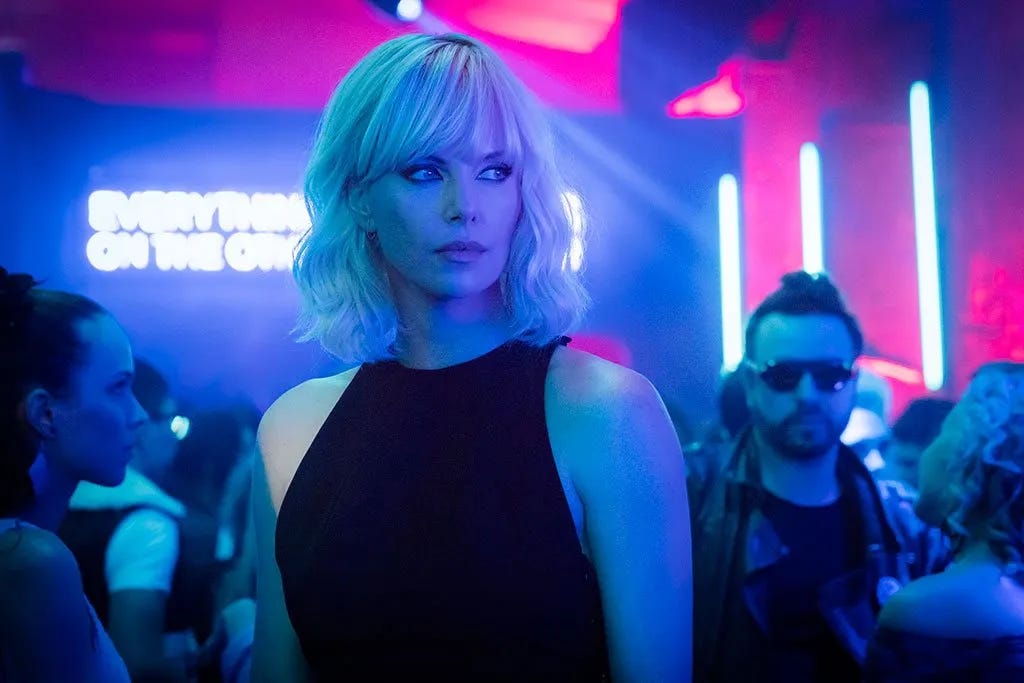
Unlike other topics we have explored in Bi-te Size Bits, bisexual lighting doesn’t originate in some convoluted corner of academia. As alluded to in the intro, it seems to have come from Tumblr2.
A Timeline of Bisexual Lighting
The 1980s
Bisexual lighting as a theory didn’t begin here, but this was the heyday of neon lighting. A common fixture in clubs and bars, these artificially coloured lights also made appearances in sci-fi films. This is an essential part of the history, as many instances of bisexual lighting in the future would take place in media set in clubs of this era. This will be the central point of tension in the bisexual lighting phenomenon, feeding into an unanswerable question that has been posed for all of eternity: ‘Is it gay or is it just the 80s?’

1998
The Bisexual Pride Flag is created by activist Michael Page. The pink represents attraction to the same gender, the blue represents attraction to the opposite gender, and the purple stripe in the middle represents attraction to both3.
2014
Tumblr user alabelle creation posts about the brief4 use of blue, pink, and purple lighting in a club scene in an episode of Sherlock, theorising that this suggested Watson’s bisexuality.
The term and aesthetic begin to grow in popularity online, evolving into memes and Twitter posts. It becomes a popular lighting choice for YouTubers, and theories begin to circulate about the hidden sexuality of characters in media that shine in these hues.
2016 - 2017
The peak of the bisexual lighting craze. Some of the most cited examples of the phenomenon come from this period, starting with the San Junipero episode of Black Mirror (Charlie Brooker) and The Neon Demon (Nicolas Winding Refn) in 2016. Atomic Blonde (David Leitch) and Blade Runner 2049 (Denis Villeneuve) land in 2017. While some of these titles feature openly queer characters, the lighting choices aren’t necessarily intended to reflect sexuality. All these cited bisexual lighting moments happen in a club, in the sci-fi future, or in the 80s—all common places for this kind of neon lighting. But the internet cared not for this nuance. It was all in on the bisexual lighting trend.
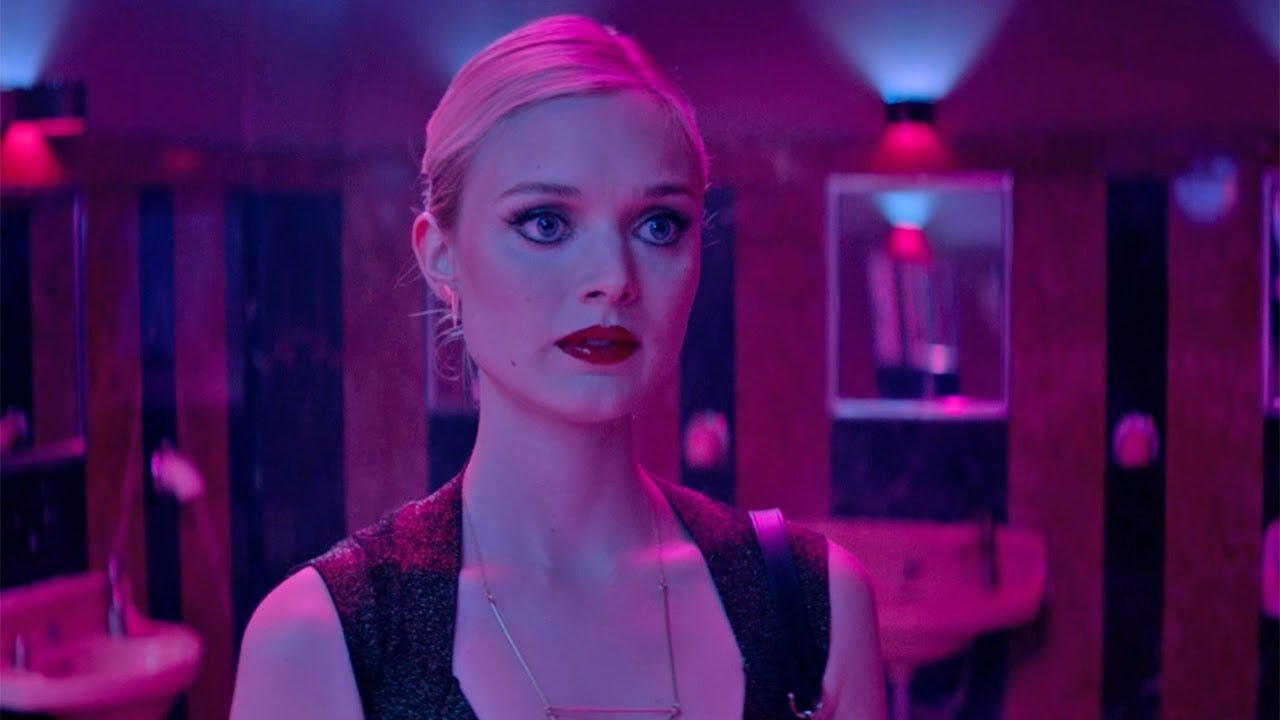
2018
Janelle Monáe drops the queer love anthem Make Me Feel, which features Monáe bathed in those neon colours throughout. Articles commented on the use of bisexual lighting5, transitioning the term from online queer rhetoric to critical terminology. The BBC even wrote an article on the trend in April that year.
The discourse also developed into highlighting the issues with using this lighting scheme as a representation of sexuality. As the colours were often used in club or bar scenes, some online commenters have said this feeds into harmful stereotypes about bisexual people having loose morals or being overly promiscuous6. But when the motivation behind the lighting use itself is unclear, it’s difficult to draw too many conclusions about what this choice is saying about the bi community.
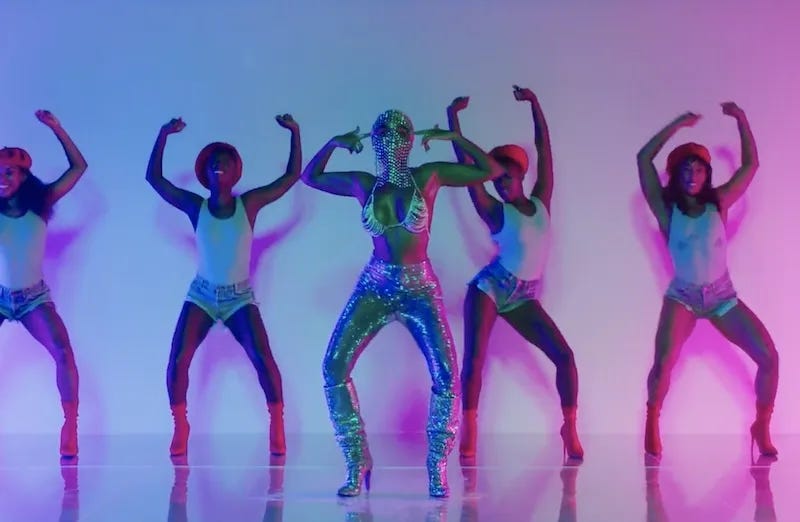
2019 - Present
Monáe’s video was truly the peak of the bisexual lighting craze, as uses of this colour palette dwindled in the years that followed. However, the trend does still live on. While much use of bisexual lighting in its short history has been ambiguous in intention, the popularity of the term has led to more purposeful depictions. Bisexual lighting was embraced in the Netflix teen series Heartstopper (Alice Oseman) in 2022, executive producer Patrick Walters reflects:
“I remember telling Diana [Olifirova], our amazing cinematographer, ‘If you can just bathe Nick in the colors of the bisexual flag as much as possible, that would be really appreciated.’”7
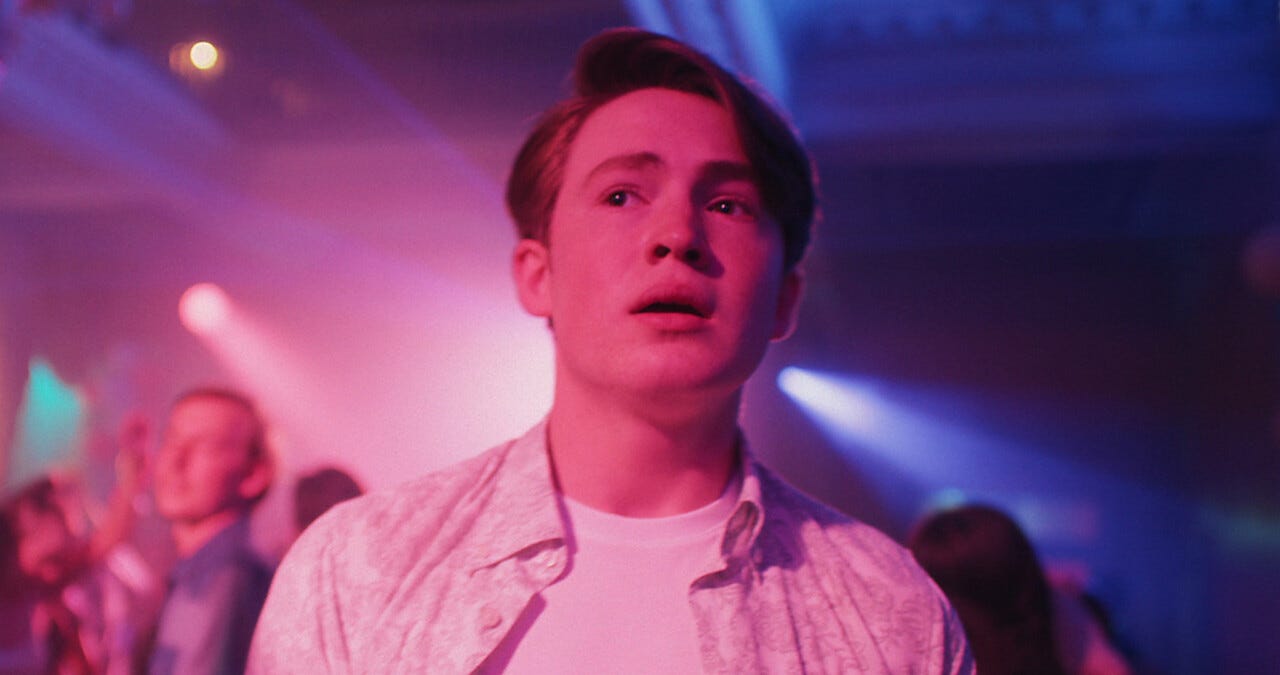
So is bisexual lighting even a thing?
Colours are commonly used in media to represent meaning, emotion, and character traits. Everyone’s favourite work drama, Severance (Dan Erickson, 2022-present), uses blue to represent the ‘innie’ world and red to represent the ‘outie’ world. Purple or blue and red stripes are used when these worlds cross over. These colours also have emotional layers, with blue being calming but cold and red having more warmth8. This use is very intentional.
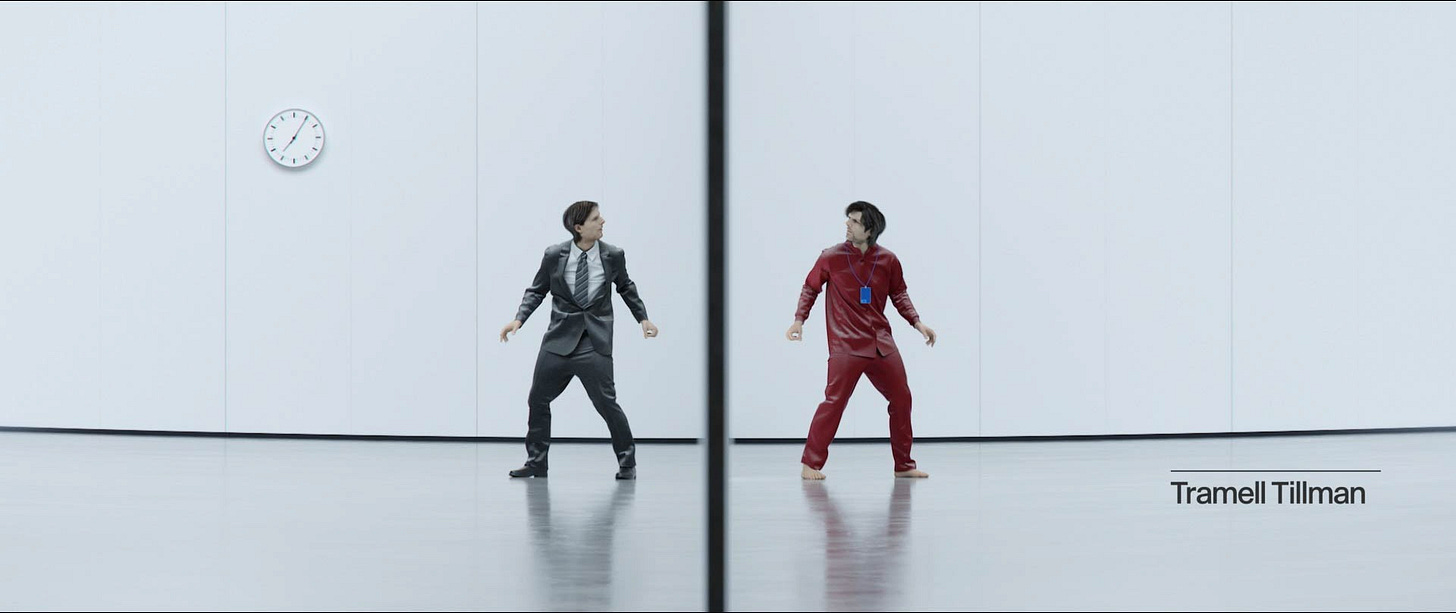
But these choices don’t have to be intentional to be valid. Even if the creator of a piece of media wanted certain colours to mean something specific—such as to evoke the 80s club scene or to depict an artificial sci-fi future—it does not mean readings of these colours as bisexual are wrong. We have covered this a bit in the Bi-te Size Bit on ‘queering’, which validates the audience’s freedom to develop their own narratives from media, but let’s take this meme even further into the realm of media studies with Stuart Hall’s theory of encoding and decoding.
Hall’s theory was centred around television media. To put it simply, someone will create a piece of TV media and ‘encode’ it with the message they want to send to the audience. To do this, they will use words, symbols, colours, music, and other tools at their disposal to make that message clear. The audience then ‘decodes’ this message when they watch it.
But, as Hall observes, ‘the codes of encoding and decoding may not be perfectly symmetrical’9. While some codes might be ubiquitous, such as ‘☺’ meaning happy, other codes (like colours) are more ambiguous and can change meaning depending on your context. What this neon blue, pink, and purple means to some people clearly means something very different to others. What we saw in the late 2010s with bisexual lighting was a unique convergence of filmmakers wanting to evoke a neon-noir atmosphere with an online queer audience that primarily associated those colour codes with a flag. The original Blade Runner (Ridley Scott, 1982) doesn’t get the same bisexual lighting reading as Blade Runner 2049 because it was released before the pivotal moment in 1998 when the bisexual pride flag was created10.

These interpretative differences do not necessarily mean that the encoder has failed or the decoder is wrong. Unless there is a very clear reason why an encoder’s message must be completely understood by the decoder (such as an instructional video on fire exits), disparity between the two doesn’t do any damage. It contributes to the living, evolving nature of media consumption, where different groups of people across different points in time can get something unique from the media they are consuming. It removes control of media from a single creative source and gives it to everyone.
So thank you to the pioneering academics of 2014 bisexual Tumblr. You’ve given the world something beautiful.
Further reading
Want more than a bi-te size bit of knowledge? Some recommended reads:
Something short: The Rise (and fall) of Bisexual Lighting by Michelle Olguin is a good overview of the bisexual lighting craze.
Something academic: The extended works of Stuart Hall cover a range of topics from media theory to colonialism.
Let’s do this together
I would love to get your comments and insights on my work so we can grow this place together. Please like and share and comment and all that other stuff. It’s much appreciated.
For those who didn’t spend the majority of their life online in the late 2000s, tumblr is a blogging and social networking website
“LGBTQ+ Pride Flags.” HRC. Accessed 13 Mar. 2025.
Literally, it’s a few seconds of screen time
Such as this piece in Vulture and this one in Dazed
Such as this one in Cosmopolitan
Wang, Lydia. “Yes, the Bisexual Lighting in ‘Heartstopper’ Was Very Intentional.” Netflix Tudum, May 2022
Woerner, Meredith, and Carson Burton. “Breaking Down the Blue, Green and Purple Rooms Inside ‘Severance.’” Variety, 5 Aug. 2022
Hall, Stuart. “Stuart Hall (1973) ‘Encoding and Decoding.’” Classics in Media Theory, edited by Johan Fornäs, Routledge, 2024.
And before the pivotal creation of tumblr







Legendary Fright Night reference, one of my favourite movies. 💜 I hope there's a future Trial Bi Media essay on it somewhere down the line!
I really missed Ken’s dance sequence in Barbie being mentioned in this piece! 🏳️⚧️